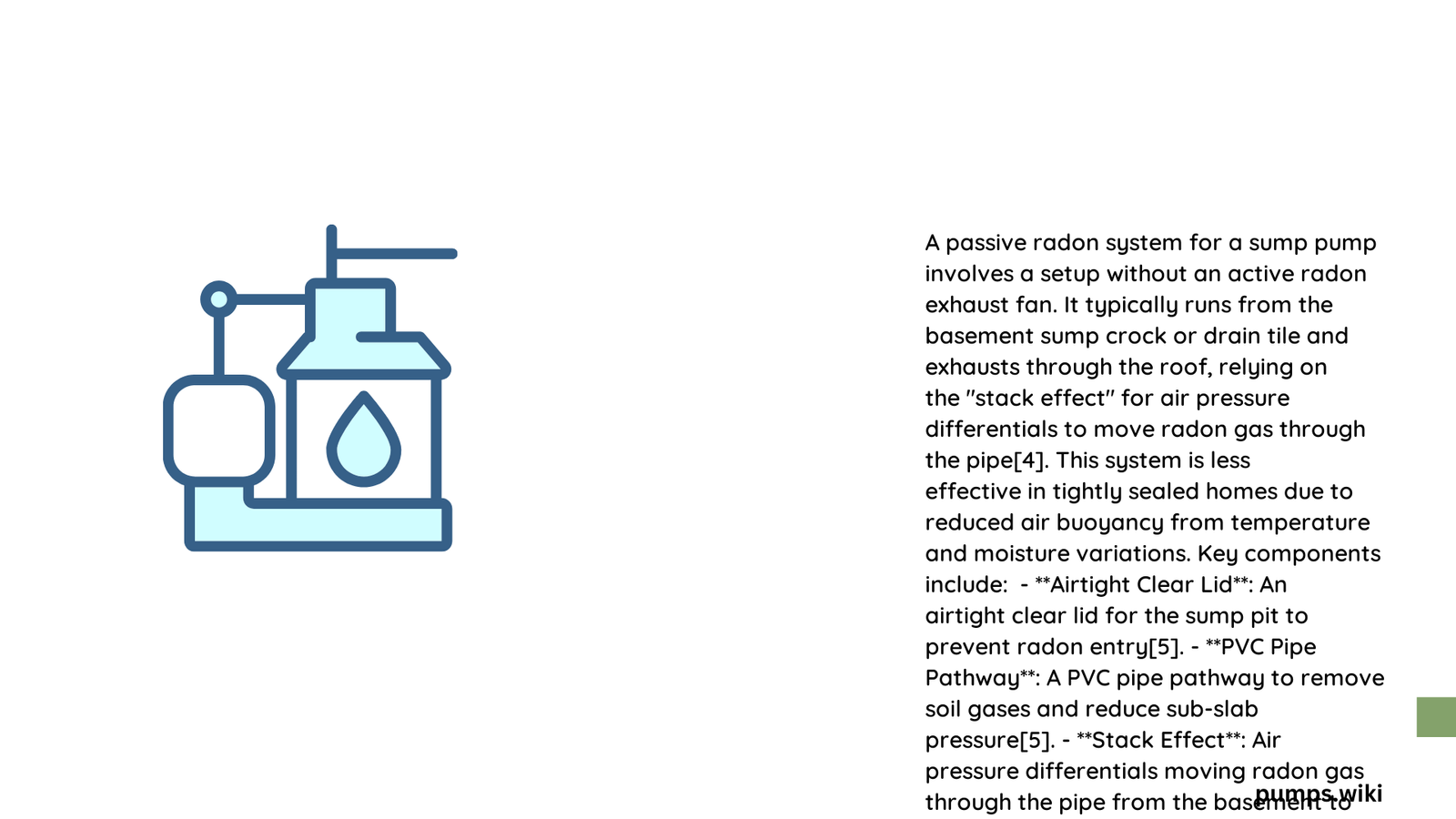A passive radon system sump pump represents a critical solution for homeowners seeking to reduce dangerous radon gas concentrations beneath their foundation. This specialized system creates a strategic low-pressure point under the building, effectively collecting and redirecting potentially harmful radon gas away from living spaces through a carefully designed underground collection and venting mechanism.
What Makes a Passive Radon System Sump Pump Essential?
Radon, an invisible and odorless radioactive gas, poses significant health risks when accumulated in residential environments. A passive radon system sump pump provides a proactive approach to mitigating these risks by implementing a sophisticated underground gas collection strategy.
How Does a Passive Radon System Sump Pump Work?
Fundamental Design Principles
- Underground Collection Point: Creates a dedicated low-pressure zone beneath the foundation
- Pipe Network: Utilizes 4-inch perforated piping to collect soil gases
- Natural Ventilation: Relies on stack effect and wind action for gas movement
| Component | Specification | Purpose |
|---|---|---|
| Sump Pit | 120 mm diameter | Gas collection point |
| Pipe Material | Rigid/Flexible Perforated | Gas transportation |
| Sealing Method | Polyurethane Caulk | Prevent gas leakage |
What Are the Key Installation Requirements?
Precise Excavation Specifications
- Drill a 120 mm diameter hole through external wall
- Excavate approximately 10 liters of material under floor slab
- Install perforated piping connected to collection point
- Seal all penetration points with non-shrink grout
What Determines System Effectiveness?
Performance Metrics
- Average Radon Reduction: Can lower indoor radon levels significantly
- Soil Permeability: Influences overall system efficiency
- Natural Ventilation Factors: Wind and temperature differentials impact gas movement
What Maintenance Considerations Exist?
Long-Term System Management
- Regular inspection of pipe integrity
- Checking for potential blockages
- Monitoring radon level reductions
- Ensuring proper sealing remains intact
What Cost Factors Should Homeowners Consider?
Financial Investment
- Typical installation costs range between £1,400 to £3,000
- Varies based on property size and complexity
- Long-term health benefits outweigh initial investment
What Technical Challenges Might Arise?
Potential Installation Complexities
- Ensuring proper underground sealing
- Managing varying soil conditions
- Preventing unintended air draw from building cavities
What Are the Health Implications?
Radon Exposure Risks
- Prolonged exposure increases lung cancer probability
- Passive sump systems provide critical risk mitigation
- Recommended for homes in high-radon geographical regions
Expert Recommendations

Homeowners should:
– Conduct professional radon testing
– Consult certified mitigation specialists
– Consider active fan-assisted systems for maximum effectiveness
– Perform periodic system performance evaluations
Technical Specifications Summary
- Pipe Diameter: 100 mm (4 inches)
- Collection Volume: Approximately 10 liters
- Sealing Method: Polyurethane caulk
- Ventilation: Natural stack effect
Conclusion
A passive radon system sump pump offers a scientifically designed solution for protecting residential environments from dangerous radon gas accumulation. Professional installation and periodic maintenance ensure optimal performance and long-term health protection.
